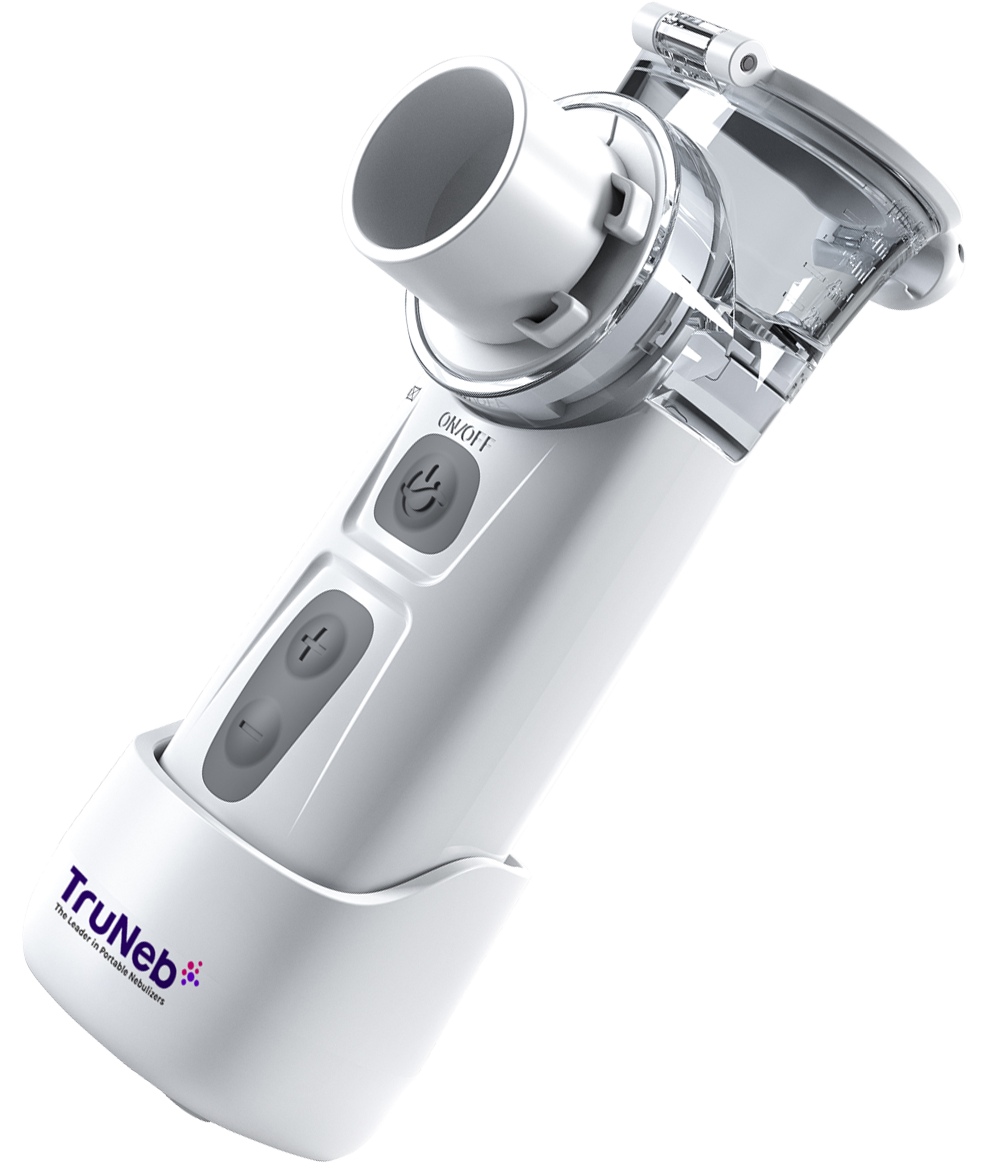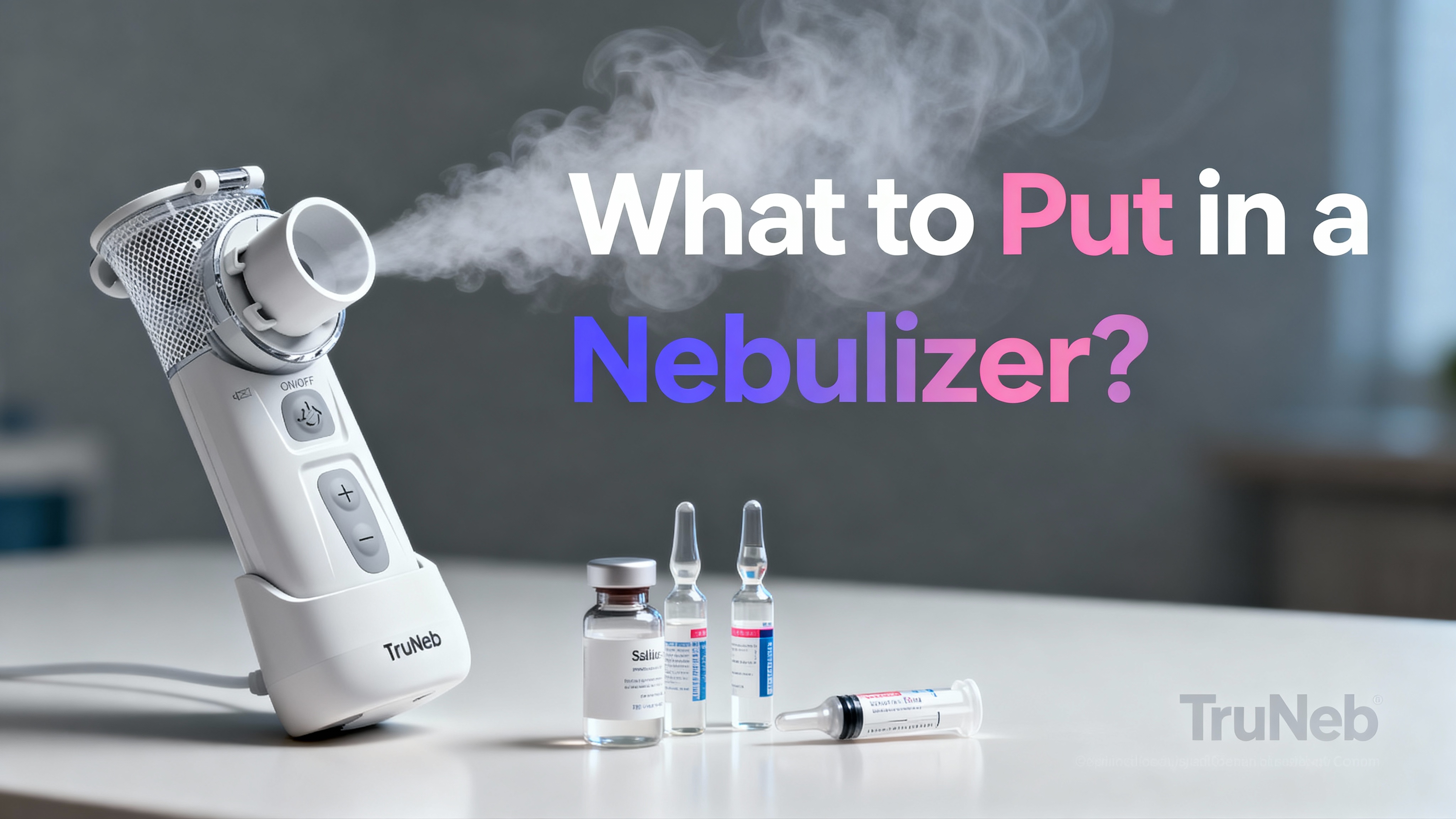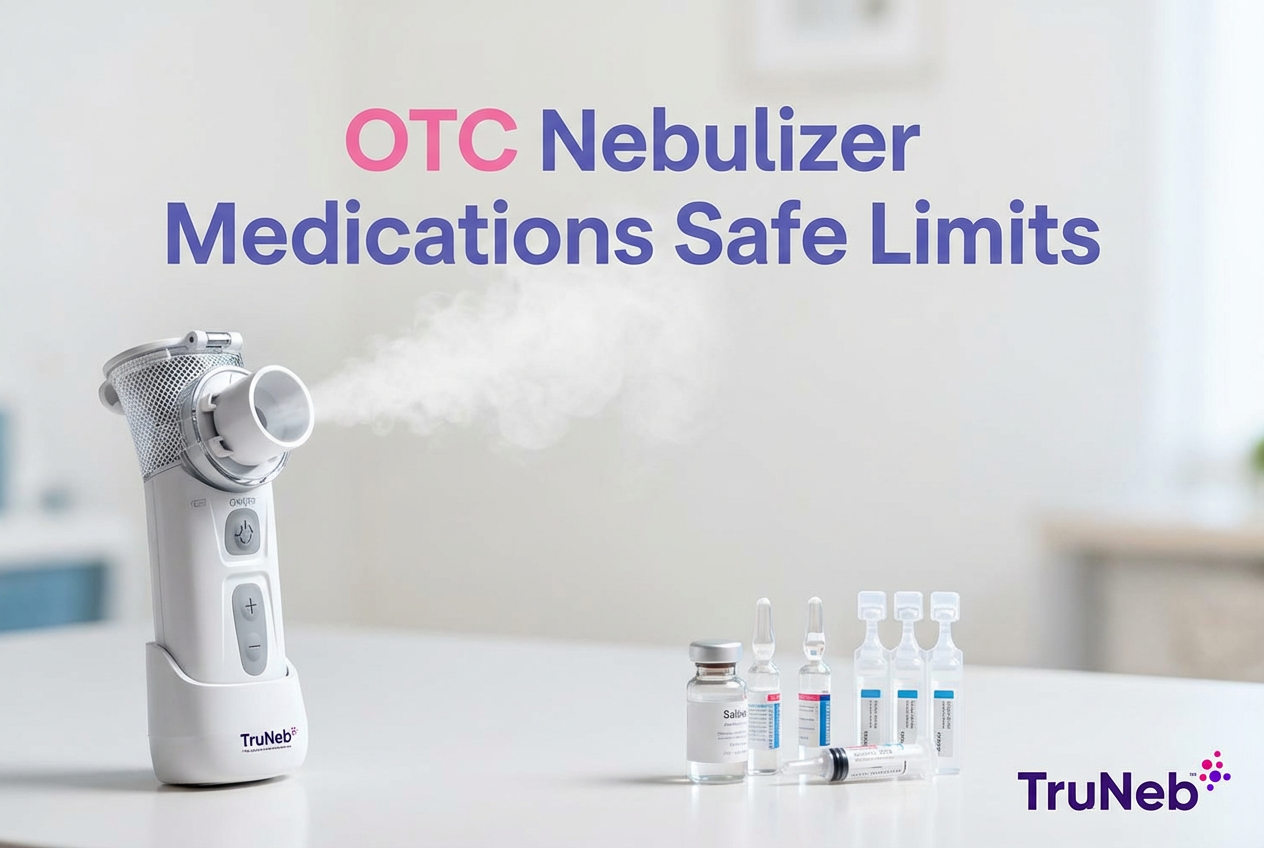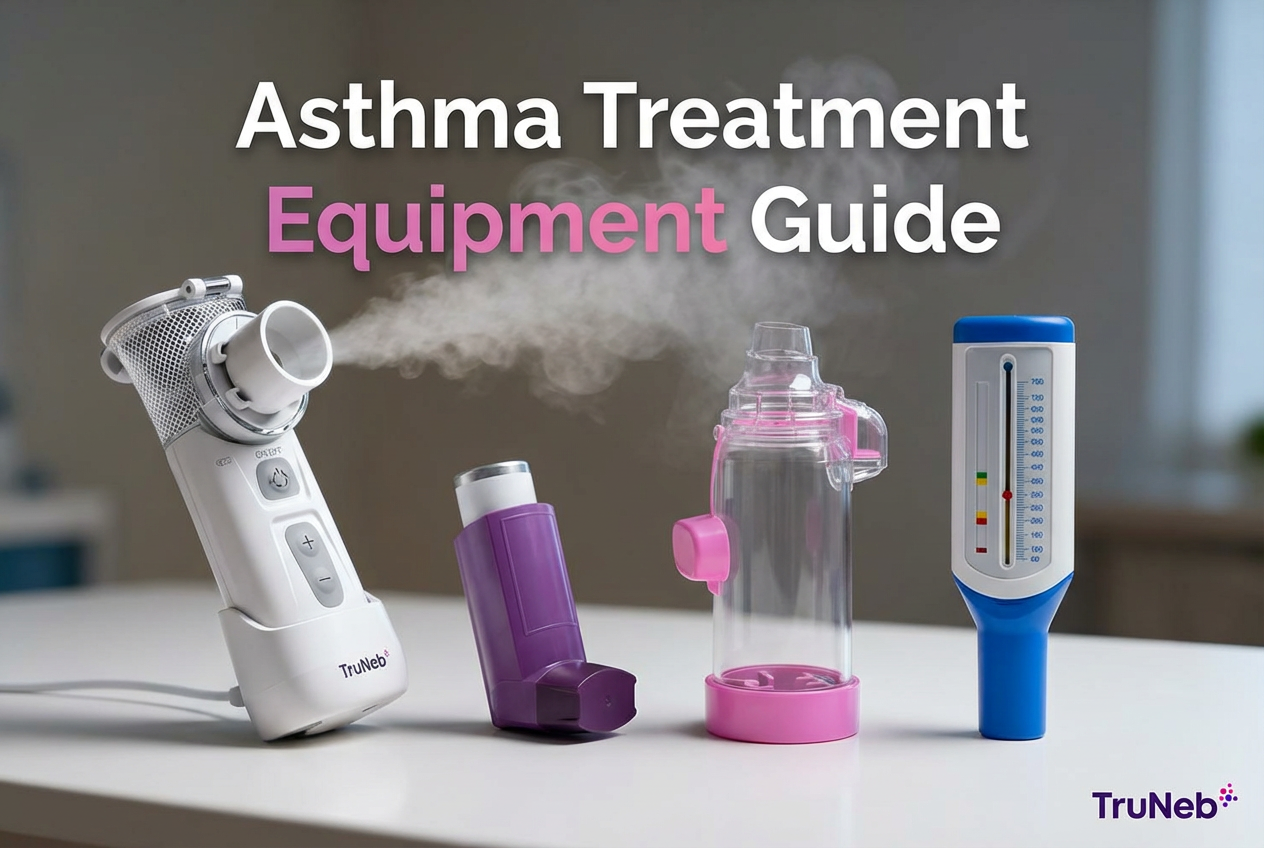On this page
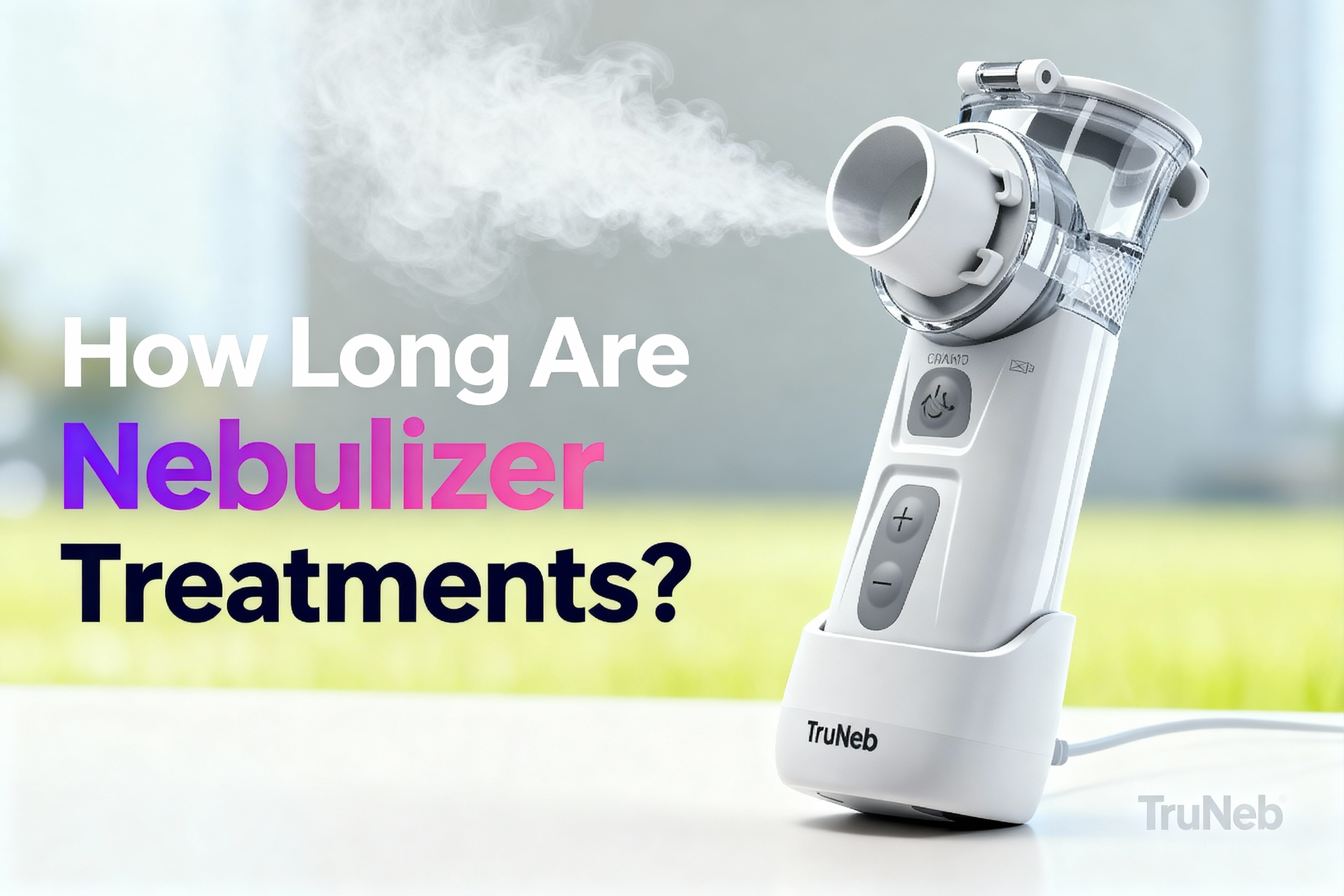
Most nebulizer treatments take about 5 to 15 minutes per session. That window depends on the medication, the amount of liquid in the cup, and the type of nebulizer you use.
You’ll know you’re done when the mist slows and the cup starts to sputter. Keep breathing the mist until it’s almost gone so you get the full dose.
At home, a breathing treatment usually takes about 10 minutes. Nebulizers are used for asthma, COPD, and other lung conditions.
⚠️ If you have severe shortness of breath, blue lips or face, chest pain, confusion, or symptoms that rapidly worsen, seek emergency care right away.
A typical at‑home breathing treatment lasts about 10 minutes, with most sessions finishing within 5 to 15 minutes.
What Factors Influence Nebulizer Treatment Duration?
Several things can change how long your nebulizer runs.
Device type and performance
- Jet (compressor) nebulizers usually take a bit longer because of their output rate and airflow.
- Vibrating mesh nebulizers can deliver the same volume faster and more quietly.
- Ultrasonic models can be quick for thin solutions but aren’t suited for every medication.
Medication type and volume
- Smaller volumes (like a standard albuterol unit dose) usually finish faster.
- Thicker suspensions and larger fills take longer to nebulize.
- Mixing medicines increases total volume, which can extend time.
User technique and age
- Calm, steady breathing helps the mist reach your lungs efficiently.
- Kids sometimes need breaks or distractions, which can make the clock time longer even if the device output is the same.
Clogged or worn parts can slow output and lengthen sessions.
In short, more liquid and slower devices mean longer sessions; efficient devices, clean parts, and smaller doses finish faster.
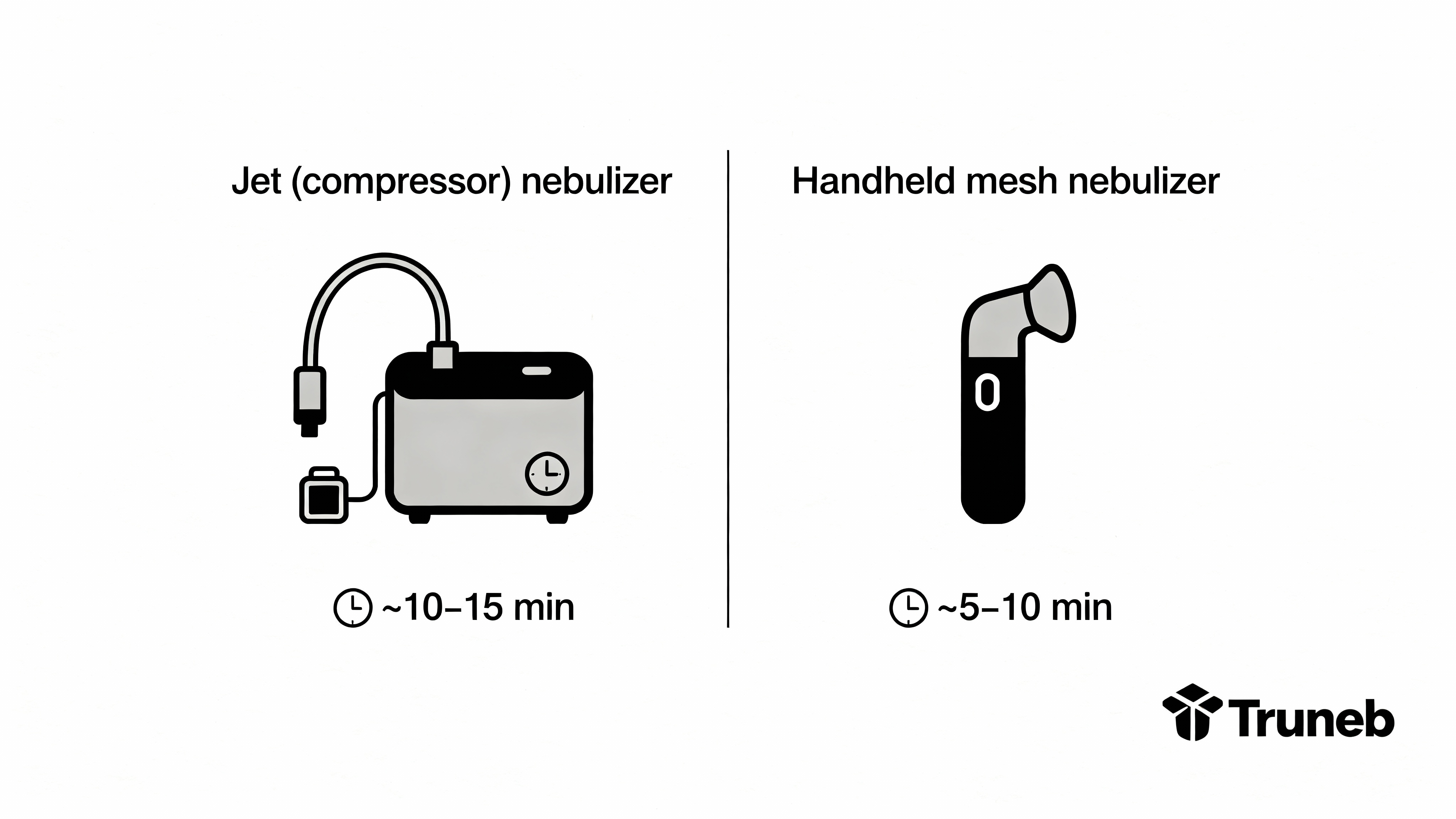
How Long Does Each Type of Nebulizer Medication Take?
Here are typical ranges for common meds. Always follow your prescription, and finish the full dose.
Albuterol (and levalbuterol)
Most albuterol nebulizer treatments take about 5 to 10 minutes for a standard unit dose. Older jet devices can be closer to 10 minutes; mesh devices can finish sooner.
Ipratropium or Albuterol + Ipratropium (DuoNeb)
Similar total time, usually 5 to 15 minutes, depending on the combined volume and device speed.
Budesonide (inhaled corticosteroid)
Usually around 10 minutes. Because it’s a suspension, some devices can take the longer end and leave slight residue in the cup—keep going until mist slows.
Hypertonic saline (3% or 7%)
Usually 10 to 15 minutes for a typical 4 mL dose. You might pause to cough, which can extend the clock time. It’s commonly used under a doctor’s guidance for conditions like cystic fibrosis or stubborn mucus in chronic bronchitis. TruNeb™ 3% and 7% Hypertonic Saline solutions are examples used for mucus clearance. Talk to your doctor before using hypertonic saline.
Most bronchodilators run about 5–10 minutes, while larger volumes like hypertonic saline tend to run closer to 15.
| Medication or solution | Typical time |
|---|---|
| Albuterol or levalbuterol | 5–10 minutes |
| Ipratropium (alone) | ~5–15 minutes |
| Albuterol + ipratropium (DuoNeb) | ~5–15 minutes (combined dose) |
| Budesonide (ICS suspension) | ~10 minutes (can vary) |
| Hypertonic saline 3% or 7% | 10–15 minutes |
Note: Times reflect common home doses on typical devices; your time can vary with medication volume, device type, and breathing technique.
Nebulizer Treatment Duration for Children vs. Adults
For both kids and adults, treatments usually fall in the same 5–15 minute range. The difference is mostly comfort and cooperation.
Infants and children
- Smaller doses can finish a little faster.
- Masks work better than mouthpieces for young kids.
- Distraction helps. Try a short video or a story so breathing stays calm and steady.
- Quieter devices can make the routine easier to finish.
Adults
- A mouthpiece and upright posture help medicine reach deep into the lungs.
- Don’t talk during the session. Breathe normally, and take a few slow deep breaths so more medicine reaches your lungs.
Smaller pediatric doses sometimes finish a bit faster, but breaks can make the clock time longer.
Kids and adults have similar treatment times; calm, steady breathing keeps most sessions near 10 minutes.

Tips to Make Nebulizer Sessions Efficient and Comfortable
- Set up right: Check the cup, cap, and connections are snug. Use the dose on your prescription and measure carefully.
- Sit tall: Sit upright or hold your child upright. Avoid talking during treatment.
- Breathe steady: Breathe normally, and take a few slow deep breaths so more medicine reaches your lungs.
- Watch the mist: Run until the mist slows and the cup sputters.
- Power and parts: Use a fully charged battery or stable outlet. Keep filters clean on jet units and replace worn parts.
- Don’t add extra liquid: Don’t add water or extra solution to "speed it up"—more volume usually makes sessions longer unless your doctor instructs otherwise.
- Know your device: You might see products labeled "steam inhaler"—these are not nebulizers and aren’t for breathing prescription medicines.
- Make it routine: Use a short show, music, or a timer so the 10 minutes passes smoothly.
Small habits—good setup, posture, clean parts, steady breathing—help you finish on time and get the full dose.
Quick Guide: Setup, Cleaning, and Maintenance
- After each use: Rinse the nebulizer cup and mask/mouthpiece with warm water, then air dry.
- Daily (or as instructed): Wash with mild soap and water, rinse well, and air dry fully.
- Disinfect regularly: Follow your device manual for approved methods.
- Replace parts: Change filters (jet units), cups, masks, and tubing as recommended. Worn parts can slow treatments and raise infection risk.
Residue or a clogged mesh can slow the mist and make treatments run long.
Clean gear helps each session stay within the usual 5–15 minute range and lowers germ risk. See your device manual for exact steps.
Safety note: Talk to your doctor before trying a new medication or changing how you use your device.
Clean, well‑maintained parts help keep sessions within the usual 5–15 minute range and reduce germ risk.
Frequently Asked Questions
Tap or click a question below to see the answer:
It’s done when the mist slows and the cup starts to sputter. Keep going until the liquid is almost gone.
Check dose volume, battery or power, and that parts are clean and seated correctly. If sessions routinely exceed 20 minutes despite clean parts and the correct dose, contact your doctor or the device manufacturer.
Follow your prescription. If you think you need treatments more frequently, talk with your doctor.
Not usually. The same drug (like albuterol) has a similar duration of effect regardless of device; a nebulizer just takes longer to deliver.
Most compressors last several years with proper care. Portable mesh units can also last years, though some parts need periodic replacement per the manual.
Key Takeaways
- A typical breathing treatment lasts around 10 minutes, with a common range of 5 to 15 minutes.
- Device type, medication volume, and user technique affect total time.
- Finish the full dose even if you feel better before the mist slows.
- If your older device is slowing you down, a portable mesh nebulizer like the TruNeb portable mesh nebulizer can make treatments quieter and more convenient while you follow your care plan.
Talk to your doctor before trying a new medication or changing your routine.
Disclaimer: This article is for informational purposes only and isn’t a substitute for professional medical advice. Always talk with your doctor about your symptoms, medications, and treatment plan.

